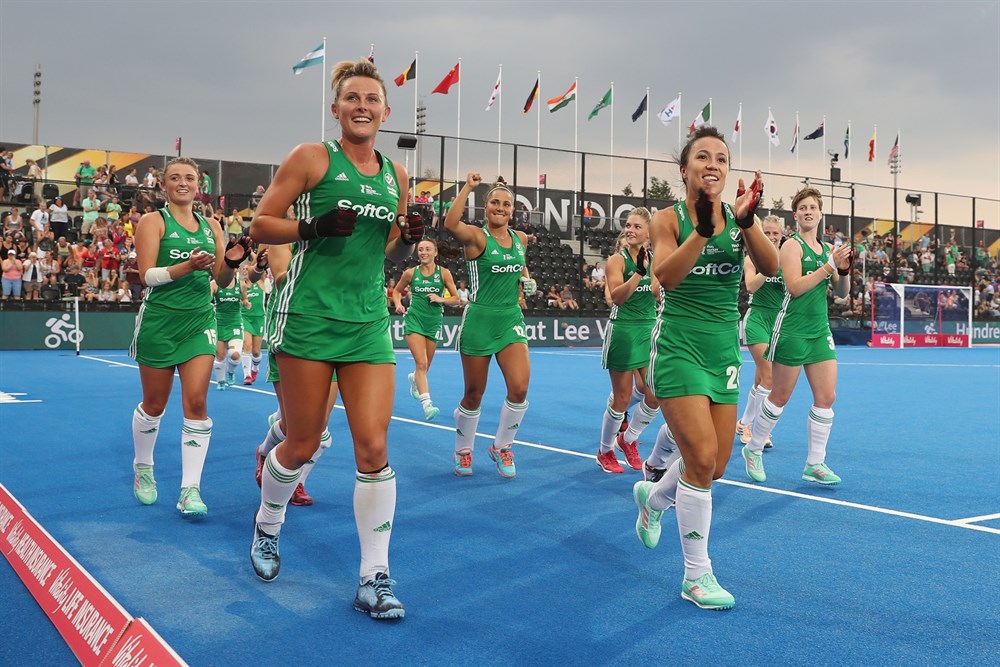WCW: Irish eyes smiling through thick and thin
Share
It would be unfair to term Ireland’s march into the final of the Women’s Hockey World Cup a miracle. Instead, call it a triumph of an indomitable spirit battling impossible odds.
The Irish feat manifested itself in a group of players paying to play for their country, reportedly to the tune of 550 euros per player a year.
And that on top of combining work careers with playing a sport with professional demands.
Needless to say, that includes holding a full time job while juggling resources, time and energy to be good enough to challenge opponents, most of whom are full-time athletes supported by central funding.
The Irish women, we are told, experienced a welcome problem — a plea to employers to extend leave after going further than they ever imagined in the World Cup.
They beat India 1-0 to top the pool and book a direct quarterfinal spot. The Green Army then beat India again, this time in a shootout to enter the semifinals where they accounted for Spain in the tie-breaker again.
It set up a Ripley’s Believe it or Not scenario — the second lowest ranked side (No. 16) in the World Cup taking on the No. 1 and seven-time champions, the redoubtable Netherlands.
Reaching the final is surely a watershed moment for the lionhearted Irish.
After the men’s rapid strides in recent years which led to the country’s first ever Olympic spot in a team sport since 1948 when they qualified for Rio 2016, the Irish women have taken the cue.
Their tale of sacrifice and battle against heavy odds, however, is familiar.
Ask Sean Kerly, Great Britain gold medal hero of the 1988 Seoul Olympics. Giving up his marketing job, he walked a tightrope to get in the best form and shape for the Games.
Teammate and star goalkeeper Ian Taylor who held two teaching jobs to sustain his hockey activity was another exemplary story.
The pressure of pursuing hockey and the hardships and sacrifice borne by self and family, however, took its toll on some.
Grant Mitton, the young Australian forward in the mid-1980s chose to quit at the young of 24 to build a business career. As did Imran Sherwani, Sean Kerly’s teammate and effervescent forward at Seoul, who called time on his career to contribute to his family’s news agency business.
The Germans have made multi-tasking a fine art, however. Michael Green who excelled in the 1990s and early 2000s was found gazing at his laptop screen between training sessions in a bid to earn a medical degree and German players down the years are noted for juggling studies with playing hockey at the highest level. Never easy.
Full funding and centralized programs have bettered the lot of players in the Netherlands, Australia and England to name a few but the spare a thought for the likes of South Africa who like their Irish counterparts battle the odds aggravated by geographical isolation from the top nations.
The situation contrasts that in India where players are virtually paid to play. As a matter of fact, hockey has long been seen as a passport for a job — a welcome situation, given that most players come from economically challenged backgrounds.
But why then haven’t Indian teams dominated the podium with so much going in their favour?
The reasons are manifold, and includes a less than adequate player base ready to graduate into world class. A job, for many becomes an end instead of a means.
The Late Leyland D’Souza, the doyen of hockey journalists, once said, “The reasons for the Western teams’ eminence despite the odds comes from their love for the game. A form of patriotism, if you like.”
You get the drift while watching giant-killers Ireland and Italy in the World Cup.



